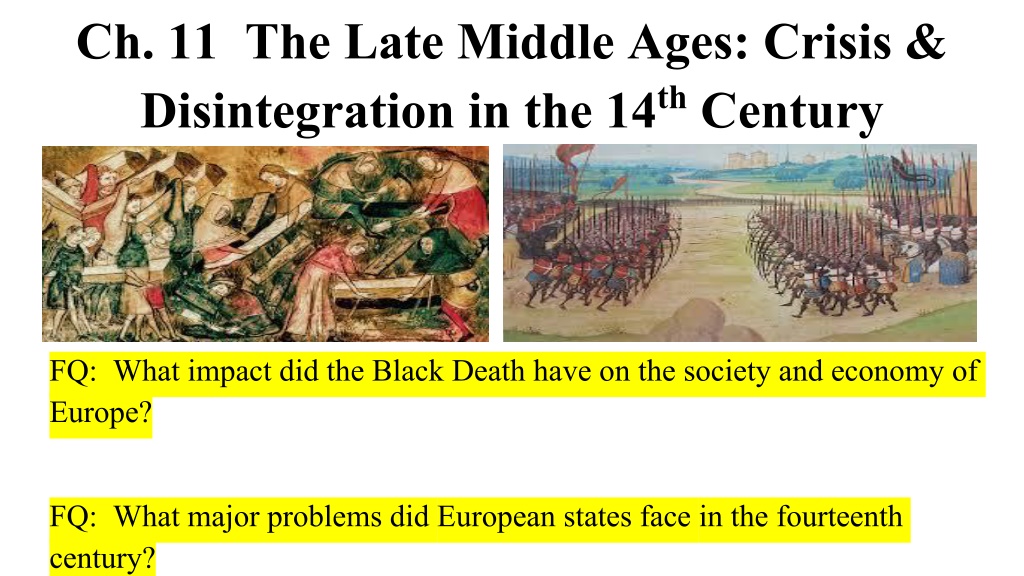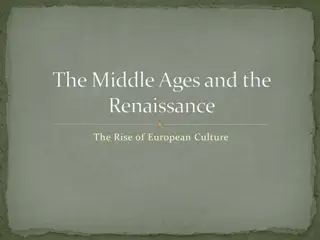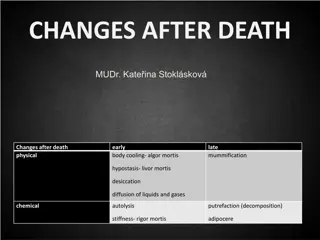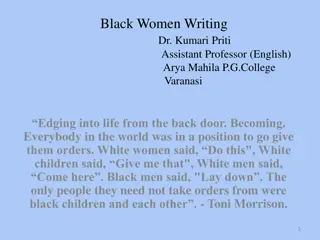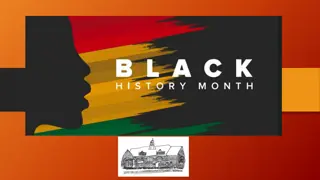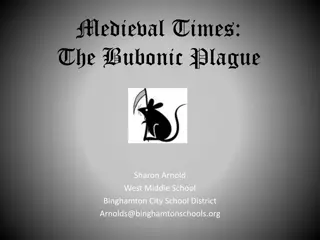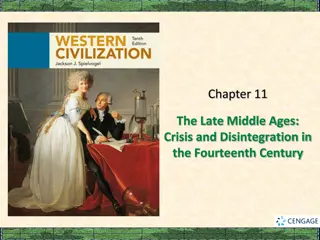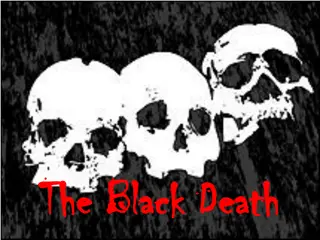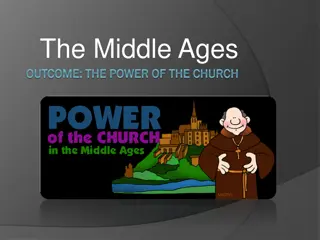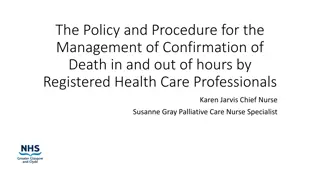Impact of the Black Death on the Late Middle Ages in Europe
The Black Death had a profound impact on European society and economy in the 14th century, causing social and economic upheaval, labor shortage, increased wages, and anti-Semitic sentiments. It also led to peasant revolts and the disintegration of medieval life, ultimately contributing to the breakdown of feudal ties and the emergence of nation-states.
Download Presentation

Please find below an Image/Link to download the presentation.
The content on the website is provided AS IS for your information and personal use only. It may not be sold, licensed, or shared on other websites without obtaining consent from the author. Download presentation by click this link. If you encounter any issues during the download, it is possible that the publisher has removed the file from their server.
E N D
Presentation Transcript
Ch. 11 The Late Middle Ages: Crisis & Disintegration in the 14thCentury FQ: What impact did the Black Death have on the society and economy of Europe? FQ: What major problems did European states face in the fourteenth century?
Three Main Pillars of Medieval Life feudal system (political/military) -a peasant or worker known as a vassal received a piece of land in return for serving a lord or king, especially during times of war. manor system - economic and social systemby which the peasants of medieval Europe were rendered dependent on their land and on their lord. Roman Catholic Church
Disintegration of Medieval Life Black Death led to social and economic upheaval. Hundred Years War broke feudal ties and helped create nation- states (England & France) Cannon and longbow changed military tactics. Great Schism and French Papacy weakened the Catholic Church.
Cause and Impact of the Black Death Causes Mongolsincreased trade between Asia and Europe leading to flea infested ratstraveling on the Silk Road. Movement from rural to urban areas increased. Famine in early 1300s led to chronic malnutrition, infant mortality increasing, lower birth rates and higher risk of disease. Impacts Labor shortage leads to wages going up (when there was work) Aristocrats respond by passing Statute of Laborers to limit wages which led to the Peasant Revolt of 1358. Art became preoccupied with death and mortality Anti-Semitic feelings grew as Jews were blamed for the Black Death.
Peasant Revolts 1358 Jacquerie (peasant revolt in northern France). Class tensions were high. Landed nobles wanted to hold onto their political privileges. 1381 English Peasant Revolt was more a product of rising expectations. King Richard II promised to give in to the peasant demands only to go back on his word and arrested hundreds. Peasant and urban revolts sometimes resulted in short-term gains but were mostly quickly crushed by the ruling class.
Causes of the Hundred Years War (1337-1453) ? Dispute over the territory of Gascony Dispute over the right of succession to the French throne
Conduct and Course of the War French army of 1337 relied heavily on armed noble cavalry and considered foot soldiers and crossbowmen as socially inferior. English army included peasants as paid foot soldiers armed with pikes and the long bow. Fighting went back and forth until a twenty year truce was signed in 1396. War was renewed by English King, Henry V when the French were in the middle of civil war.
Joan of Arc Born in 1412 to peasants from a village in Champagne. Deeply religious, Joan experienced visions and believed her favorite saints had commanded her to free France and have the dauphin crowned king. Captured and condemned to death as a heretic and burned at the stake in 1431. Christine de Pizan, The Poem of Joan of Arc (July 31, 1429) A Feminist Heroine.
End of the War Defeats of English armies in Normandy and Aquitaine ultimately led to French victory. French success was attributed to the use of the cannon (a new weapon made possible by the invention of gunpowder). 1453 only part of France that was left in English control was the coastal town of Calais.
